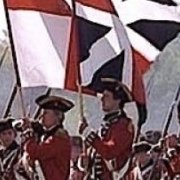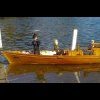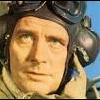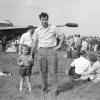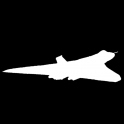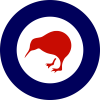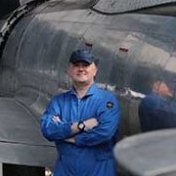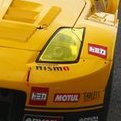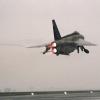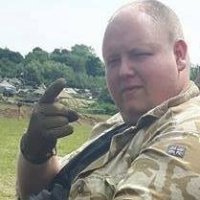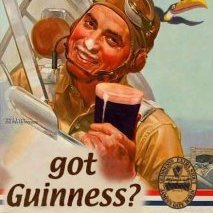Leaderboard
Popular Content
Showing content with the highest reputation on 07/05/21 in all areas
-
This time in my opinion, a very interesting topic for people who like having fun with weathering. A-7E Hellenic Air Force Trumpeter 1:32 As always model straight from the box + mask to make Greek insignia. 1:1 A-7E Corsair II HAF Trumpeter 1:3233 points
-
Hello everyone … the first two builds of four for my U.S.S.Essex build. The Tamiya Corsair and Eduard Hellcat represent aircraft of VBF AND VF-83 flying off of Essex circa April 1945. I have an Avenger and Helldiver that will follow along soon enough. First up the VBF-83 F4U-1D Corsair. Now the VF-83 Hellcat. Please feel free to ask questions, post comments or visit the second half of my Essex thread. Dennis26 points
-
Hello everyone, I would like to present my latest build from Eduard, MIG-21M Czech Air Force, 1992. I have really struggled to take good photos of the shine metallic surface. Hope you like it. Ales22 points
-
Hello all, Here is a recently completed 'fun' build - Kinetic's 1/72 MQ-9 Reaper UAV, marked as ZZ203 of 39 Squadron, Royal Air Force in 2016. Deployed to assist for Operation Shader against ISIL, RAF Reapers fired 258 Hellfire missiles against targets in 2015, compared to 94 fired in Afghanistan in 2014. The kit was meant to be a 'fun' and 'quick' build alongside my group build commitments. Turned out to be a bit of a sod, certainly not on par with Kinetic's other latest releases. Heavy sink marks, thick sprue attachments, terrible instructions (some parts and decals aren't even shown so internet references were needed), misfitting parts and so on and so forth. Anyway after a bit of tidying, I modified the landing gear to show it as retracted by cutting off the mounting lugs and fitting in. The 'prop blur' is an acetate sheet from Tom's props, trimmed to size. I know some people aren't a big fan of the 'prop blur' but I think it looks ok for this scale. The spinner had to be modified and sanded down to get a good fit; same with the spinner plate. Paint is overall Light Ghost Grey from MRP and minimal weathering is a Flory wash. Anyway, the pictures. Just taken on the iPhone so they're not the best. Thanks for looking and stay safe Dave21 points
-
Here's a couple of MiG-15's I did over on the Africa GB. Very nice kits to put together, I even managed to put the PE in although left a couple of bits off on the undercarriage. I didn't do a great job on the wing joins on the '15bis (the wings were a very tight fit on both kits, took a bit of filing to get right) which looks even worse under the Aluminium paint! I didn't want to spoil the great detail on the surfaces, I have another early MiG-15 to do so will do better next time! Both using the kit decals, one is an Egyptian '15bis from 1956 in overall Aluminium, the second is an Algerian '15UTI apparently in service from the 60's to the 80's. I'm no expert on these subjects and they were painted using the instruction call outs. Both airbrushed using Vallejo ModelAir then glossed using 'Klear', finished off with Vallejo Matt varnish airbrushed on. The kit decals worked well with Humbrol Decalfix. Comments and critique welcome. Davey.20 points
-
Build out of box for Afrika GB, Decals from Rising Sun. Cheers Jes19 points
-
18 points
-
Hi mates, I'm about to start painting my current project, so that means it's time to think about a new project! Some of you may remember that I ginned up an old (like in 1965) Revell PB4Y-1 Liberator with all sorts of resin, photoetch, scratch-built stuff, sheets of card stock, and some great aftermarket stickers in an attempt to make people think it was actually the Hasegawa kit. Not sure that I succeeded in that endeavour, but it sure was fun. Here was the result for reference: So why not make a model of its offspring? The PB4Y-2 was quite a bit different, especially around the engines, nacelles, and waist turrets, with a single vertical tail reminiscent of the B-32 Dominator. I believe the fuselage was also longer. The only 1:72 kit that I'm aware of is the venerable Matchbox kit that first appeared in 1980. It's one of the better efforts from Matchbox and lucky for me, Revell re-released it in 2009. Why lucky? Because it's not moulded in three different colours! Just nice plain old boring grey. I picked up this kit for a mere $10 from a vendor table at an airshow several years back. Let's have a look. starting with the Gawd-awful, end opening, designed to never stay closed, collapse upon sight Revell box: Nice artwork. The styrene parts have both recessed panel lines (for major control surfaces) and very fine raised lines for everything else. I haven't decided whether this will need to be re-scribed; it may look fine just the way it is. First, the fuselage and tail: Next, the wingy thingies and other assorted bits. The engines, nacelles, cowling, waist turret panels, landing gear, and other goodies: Finally, the clear parts and there be a lot of them! The kit has the typical instruction booklet that Revell produced at the time. The decal sheet has options for VPB-106 of the US Navy on Tinian during 1945, a RCAF Liberator C.Mk.IX (RY-3) from 168 Squadron, and a French PB4Y-2S of the Aéronavale during their adventures in Indochina. It probably builds into a nice replica right from the box. But what fun would that be? Anybody can build out of the box, right? Besides, we got another box! This one here: Resin! Be still my heart! Take off your mask and put on your respirator! (I wonder if you can kill coronavirus with resin dust?) This little box of goodies is chock full of nicely cast detail parts in addition to bits that "correct" the kit. I have no knowledge (at present) of what might be wrong with the kit, but whatever. Let's see what's in Pandora's Box! Er, Privateer's Box! First, some cockpit stuff. This will be a big help in tartin' up the pit - the kit is woefully inadequate here. I think I can combine this with some Eduard B-24 Liberator photoetch that I have. Next, new engines, nacelles, and cowlings. I've read that this is one area where the kit needs correction. New propellers and tyres - the props have better shaped blades than those in the kit, and the tyres are much more detailed: And some very nicely detailed replacement parts for the waist, nose, and top turrets. Lastly, Cobra included several vacuform clear parts, and one clear resin part. Not sure why that one part (I think it's the lower bomb aimer's window) was done in resin, but there it is. Holy Frijole! I think there are more resin parts than there are styrene. Needless to say this will be a bit of a big project, so don't expect anything to happen quickly. But I will start working on this one while I'm finishing up the Hornet. When the Privateer is finished, she should look real nice sitting next to the PB4Y-1, who is a bit lonely all by herself in the Bomber wing of my display case. Cobra, who produced this resin set, is no longer in business but its tooling was acquired by Lone Star Models and this set is scheduled to be released again in 2021. Just in case one of you crazy people out there want to give it a go. That's it for now. Stay tuned and stay safe! 😷 Cheers, Bill17 points
-
Just finished this one for the African GB, build out of box aftermaked decals from Foxbat. Lovely kit from Airfix joy to build. A lot of lead needed not to be a Tailsitter. 🤔 Cheers Jes17 points
-
Hiya Folks, Another one from the Aussie/NZ GB,...... This model represents NZ3546 of 41 Sqn RNZAF which was used to support the 14 Sqn RNZAF Corsair `s based in Japan on occupation duties which had a New Zealand natioal flag on its nose,....... and as I had one of these on a DK Decals Catalina sheet,..... I used that; Here is the WIP with photos of real Kiwi Dakota`s; ,And here is the model; And a huge thank you to Steve (stevenhz) for kindly sending me the decals all the way from New Zealand as a nice surprise,..... Cheers Tony16 points
-
Early in lockdown last year I fancied building a 1/35 OH-6A Cayuse but they were rather thin on the ground . However a fellow BM'er came up trumps and supplied me with an Italeri boxing kit along with a resin XM-27 mini gun, an eduard eched detail set, paint masks and a couple of resin figures for a very reasonable price. I was also lent a very interesting book called Aeroscouts in Vietnam which contains a wealth of information on how the OH-6A was used in Vietnam and also a lot of great pictures which I used to provide inspiration for the build. The M16 and M60 and, I think the grenade box, which I altered, came with the kit. The wooden ammo box came with the XM-27, the smoke and frag grenades were from Bravo*6 with the decals coming from someone on the internet. The body armour under the rear seat was scratchbuilt. After taking these pictures I had a bit of an accident and knocked the whole thing on the floor smashing it into several pieces! However I managed to get it back together again, not made any easier by the fact that I mixed up the Olive Drab colour originally. During the build I came across the fellers and decided that they would look great with the OH-6 It took quite a while to finish these guys as I am no figure painter. However I persisted and here they are: I thoroughly enjoyed the build although getting the canopy glass to fit was difficult. The book also includes pictures of other heli's used by the Aeroscouts soooooo I am now the proud owner of Italeri's 1/35 OH-13 Thanks for looking Mick16 points
-
Build out of box for Africa GB, lovely kit joy to build. Cheers Jes14 points
-
Dora wings Savoia Marchetti S55 record flight love/hate this kit. went together ok, seemed to fit where it wanted to, decals some where to small, all stuck like limpets!!! i have wanted a S55 kit for a long time. and i am happy with it. thanks for looking12 points
-
Hello A fancy AeroMaster decal sheet attracted me to this nose art adorned Spitfire a few years back. I did not know about this aircraft at the time but a Spitfire with a huge painted lady was a bit surprising. Later on, a newer and even more precisely designed Kitsworls decal sheet increase the interest. I started documented the aircraft, only to find the aircraft was part of long range Spitfire tests mostly conducted at Wright Field (USA) and basically combining an additionnal fuselage tank and underwing P-51 tanks. Release of the splendid Eduard Spitfire Mk.IX models gave me the occasion to revive my project. Pilot was Lt Colonel Gustav Lundquist. Aircraft was equipped with a DF Loop for its flight back to England. That is during the return flight that the aircraft had to belly land in Greenland. Nose art was painting on the field during repair works. Building was straightforward and this was my first out of the bow build in a long time. Model is perfect, easy to build, sharp, accurate and detailed Paints mostly are Gunze and Tamiya. I was missing a few details to build the aircraft as I originally planned (ie with P-51 tanks). I then decided to complete this build without tanks but I hope I will eventually be able to grab additionnal information on specific pylons with plywood brace. I could not find photos of the aircraft with DF loop. I therefore stole a DF loop from a Hasegawa P-51 kit, kept fairing but rebuilt the loop from metal wire. My guess is based on the ground tests being held in the USA, long range navigation equipment may have been adapted from existing stock. And a few daylight photographs!! Eric B.11 points
-
Build out of the box, after marked decals from DP Casper. Build for GB. Cheers Jes11 points
-
11 points
-
This is a Italeri 1/48 scale kit converted into a what if twin engine attack aircraft using the engines of a Trumpeter Cessna AT-37. Saluti Giampiero11 points
-
Long overdue build update. I have been tinkering regularly at the workbench in small doses, but with nothing newsworthy to report. Also, my proper paying work is unusually stressful and hectic for me at present, a state of affairs that doesn't suit my plodding approach to most things. I am grateful to be busy nonetheless. The interior didn't get finished, rather it finished me. I ran out of steam and inclination to go further with the scratch building, but I am very happy with the results and it's something I'll work on improving. The windows needed a little work to get them to fit around the extra detail, but the razor saw made light work of it all, an invaluable purchase on this build! I used it to cut down each window, but they were still over a foot thick if to scale. IMG_6562-9 by Mike, on Flickr I then cut them down the middle, and used another new purchase, some Flex-I-Files, to sand and polish them. IMG_6558-8 by Mike, on Flickr And the finished result. These were originally a single strip of 3 windows, but the added frame work meant they were always going to need a fair bit of butchery. IMG_6568-10 by Mike, on Flickr I cut a new hole for the window next to the cargo door. I think most people now know the model was heavily based on the Hendon example with it's post war Canadian modifications. I initially worried about making a new window to fit it, then gave it up, as the open cargo door will cover it entirely anyway. IMG_6576-14 by Mike, on Flickr Interior cockpit and dash IMG_6577-15 by Mike, on Flickr All ready to close up. I added a wash to accentuate the shadows and help the details pop, but as usual it turned out rather a muddy mess. I've yet to perfect this! IMG_6573-13 by Mike, on Flickr Not visible in these shots it the exterior of the fuselage. I've spent a considerable amount of time drawing the panel lines on, scoring them, then adding the rivet lines, and going over them with a homemade riveter. It doesn't look bad, but that may change when the primer goes on! That's for the next installment.11 points
-
Hi, This is the Academy 1/72 Typhoon Ib built as HH*A of 175 Squadron, Normandy, August 1944. Cheers!10 points
-
My previous sailing ship model was the large Revell yacht America so I thought I'd try something a little smaller this time. I think next time I'll go for something a closer to medium. This small scale really taxed my modelling skills and I don't see too many more (if any at all) of this size in my future. Other than the diminutive size, the kit itself is excellent and results in a very acceptable model.10 points
-
This was built as part of the Australian & New Zealand GB. The base model is Hasegawa’s lovely 1/48th A-4E/F model which just happens to have the bits required to build an early RNZAF A-4K. A few additional bits were added. The markings come from Gekko Graphics RNZAF Decal set. Unfortunately time ha not been good to my set and they had become very fragile! Some silvered badly other, others just split into a billion bits, so unfortunately they are not that great. She was painted using AK Interactives Real Color paint, an amazing paint (lacquer) that just goes on like a dream and gives you a superb finish. The scheme is unusual and quite cheeky. The story goes….. this aircraft was involved in the “Pitch Black” exercise held in Darwin (NT Aust) in 1984 and while there suffered a bird strike whilst and had to be parked up while waiting for a new engine to arrive. Sometime when it was left alone (never a good thing to do on a RAAF base, trust me! ), she was visited by some boy’s from 75 Sqn (RAAF Mirage squadron up there at the time) who decided to “Zap” her with their squadron flash, as you do. A USAF Phantom squadron who was there at the same time also “Zapped” with a wee Phantom badge on the tail. Can imagine the response when the NZ boys saw it! Thanks for looking, a link to the build is attached. Model: Hasegawa 1/48th A-4E/F Skyhawk Paint: AK Interactive Real Color, and MRP, Tamiya Acrylics, Model Master Metalizer Lacquer Extras: Aires – A-4E/F Cockpit set 4280 Eduard – A-4E/F Exhaust Nozzle set 648251 Eduard – A-4E/F Mask set EX-023 Gekko Graphics – RNZAF A-4K decals ResKit – A-4 Skyhawk early Wheel set RS48-01299 points
-
Various small cockpit bits and bobs primed and painted with lightened Nato black (air tanks need to be silver) ready to be added and detail painted, dry brushed etc. Not that you can see much in an iPhone photo of teensy black things against a black background. But it gives me a chance to say that that’s it for a week or so as were off to a cottage in Scotland for a week tomorrow. Walking and cycling in the (doubtless) rain....9 points
-
Progress… after a nasty moment. The Tamiya instructions specify AS-7 Neutral Gray (rattle can) for the USAAF Neutral Gray undersides. So I obtained a can and carefully decanted it to a bottle; I don’t like the lack of precision/control from rattle cans. Today I prepared to airbrush the base coat of the underside, and without thinking thinned it with bog standard Tamiya thinners. Disaster; the paint rapidly turned to horrible sludge - I managed one test squirt onto a piece of paper (luckily nothing onto the actual model!) before the whole thing clogged up. 20 minutes later I’d cleaned my airbrush and just about stopped swearing. I’m all for being outside my comfort zone, but this came close to a horrible mess on my model, so I reverted to what I should have done all along: trusting iModelKit. 5 minutes of working with the excellent mixer part of the app and I had 4:1 XF-75 (IJN Grey Kure Arsenal) : XF-77 (IJN Grey Sasebo), which is definitely close enough, especially for a base coat!9 points
-
Hello,Friends - I apologise for re-posting this build.I’ve familiarised myself with the image sizing and posting,etc.for better viewing. This model is the first 1/32 scale model I’ve built so it was a steep learning curve in many respects. She carries two ‘Sea Eagle’ Anti-Shipping Missiles and wears ‘DXM’Decals. I hope you enjoy viewing. Thank You.8 points
-
This is my model of the iconic Austin Mini Cooper S. The Tamiya 1/24 scale kit is truly an oldie and has long ago been discontinued. Inside the kit there was the marking 1983. I was able to order mine on the net. The quality and the fit of the parts was good but not of the current Tamiya level. To emphasize the British origin of the car I asked my friend to print the Union Jack decal for the roof. I sprayed the red areas with Tamiya TS-8 Italian red. Inside the car I painted the seats and other parts with Humbrol and Vallejo colours and the floor was covered with dark red flock. The widow frames and other chrome coloured areas I modelled from Bare-Metal foil. In the engine compartment I added some wiring to make it look a bit busier. One snafu, of course happened during the construction. There was a nice metal transfer of the brand "Austin Cooper S" to be attached to the trunk. Well, in about forty years the glue had weakened so much that the letters didn't stick to the surface. When trying to detach the transfers from the tape I managed to ruin the "Austin". As I was to succeed with the 1 mm sized "S" it suddenly skyrocketed to outer space and was sucked in to the black hole of lost parts. So the Cooper one was the only transfer that I managed to get out and it sits now on the trunk. It's not correct but what can you do!8 points
-
Build for Africa GB, Build out of box. Paint scheme as per instruction from KP. Cheers Jes8 points
-
After much thought about what to build, I will be joining with the Minicraft PBM-5A. It will be converted to an unarmed transport PBM-3R version. The RAAF operated 12 of these during WWII mainly with 40 and 41SQN.8 points
-
Afternoon all.....just got some time to post an update of the final splinter camo'. Next step is to plan the red primer that's visible and some of the parquerization beneath in places due some primer loss. Not going to be easy as I want to airbrush the primer, so might have to liquid ask the Zim' and the Dunkelgelb....., hand paint the parquerization, then salt mask and airbrush the red primer in varying shades. The barrel I've decided to do as a replacement with the heat resist grey paint from the factory, and no Dunkelgelb. Wish I could stay to look better at the forum.....but chores await. Cheers all.8 points
-
And a few more to finish. A general shot of a real engine room to show what mine should have looked like! I am not unhappy as it will still help people understand, and be impressed, by our grand parents when they went to war for us. These were petrol starting engines that then switched to a mix of petrol/kero but they were prone to fires which sunk a few of them. My grandfather had such a fire but was able to starve it of air and live to fight another day. This is the galley. I forgot to close the drawers The stove is petrol fired (3 burners) with 2 ovens below. An oven is a metal box inside a metal box and I did the same. Both doors open and there are oven racks inside! Many things are secured with magnets which you can see in the pots but they will later be covered by indigestible food if my grandfather is to believed! Then there is a tiny bench/sink/cupboard item with a califont over to make hot water for tea etc There is another bench and cupboard both sides under the side decks. On the left is both the galley and wardroom. I regret using actual mahogany even though it was probably used on the real boat but I think I will leave it and do more features instead of perfecting this one. The table just lifts out (more magnets) so I could do it later. It is a folding table made of at least 16 parts. The section of seat in the doorway hinges up for access. The wheel controls the depth and direction of a dual bulb sub-detecting stethoscope (no batteries involved.) The headset is in the black cupboard. Other cupboards store something but I have no information. If you have any ideas I would love to hear them. The Holy of Holies - 2 officers live here! I gave then made up beds instead of the ticking mattresses and bed rolls of the 'men'. The hatches in the floor are access to the prop shafts. There is a lot of detail still to add - the head lacks usual items but a BIG question is what sort of toilet paper was standard naval issue in WW1? The dresser on the left was to hang officer uniforms and I guess the drawers underneath the beds was the rest of their personal gear. My grandfather told me the wet weather gear was either on their backs or on the hooks! There are many items to add like the desk, clock, canvas shield over starboard bunk to divert spray from the companionway and things like that. Finally this is one of 3 pencil sketches done by a real ML Skipper of his crew in the forecastle! This not only provided a lot of detail info for the area it graphically shows how congested the space was for 7 or 8 men for a week! It must have been hell when a new crewmember was seasick which was common. The background has a sort of dresser and folding table where all their meals were served from a pot, sauce added to improve the taste and finally consumed. Carrying the pot of the day from galley to forecastle when there was a sea running was a dangerous gamble! IN CONCLUSION: Thankyou for taking the time to take a look at my current pride and joy. I really only know the basics about these boats and are eager to hear of anything about them including the high angle mounting of the gun, the colour of ropes, the type of toilet paper and a host of other details including colours as I have yet to do any of the final painting. Thank you Bill Radford Hamilton, New Zealand8 points
-
Ahoy me hearties... Tis that Vulcans I see? photo c/o @Rob S Cheers.. Dave8 points
-
Now arriving in today's post - more resin! As if this model hasn't consumed enough already. Ha! First, some very nicely cast elevators/tailplanes/horizontal stabilisers/stabilators...whatever you want to call them. These are from Quickboost (aka Aires) and have super thin trailing edges. The planform outline matches the kit parts and my drawings extremely well. I can't see a difference. There is also a pivot peg so they can be posed in any orientation you desire. But where to drill the pivot hole? If you recall, these were moulded one piece with the upper fuselage, and there was no hole marked inside that you can drill out (not that I could get at it now even if I wanted to!). Quickboost tell you that the hole should be 17.5 mm from the end of the fuselage (not counting the burner cans). Based on their drawing, this hole needs to be right on the joint between upper and lower fuselage halves (which I've conveniently sanded away, filled with putty, sanded some more, and painted with primer. Hmm...I'll figure out some way. Next, a set of wheel hubs and tyres from RES/KIT in the Ukraine. I think this is the first time I've used anything from them. They look really nice. The detail here far surpasses what is in the Hasegawa kit. The main tyres have radial tread like most photos that I see (Hasegawa has no tread at all) and a more realistic cross section to the tyre itself. The nose gear tyres, although highly detailed, are a bit smaller in diameter than the kit version. I'll need to figure out which is closest to the real thing. The hubs are just exquisite, and I like the fact that they are separate, making it easier to paint. Hopefully they will go together OK once painted. Now comes the fun part - removing all the parts from their casting blocks without damaging any of them... ✂️ 🔨 💣 Cheers, Bill8 points
-
I’d forgotten how much fun masking is...... I’m using mig acrylics for the first time. I’m not a sophisticated airbrush user, and the mig paint and satin varnish were very easy to use with my neo with the 0.35 needle. The aim was to allow hints of the black primer to show through to give some variation/shadow effect. Like here on the scratch-built firewall. A sort of muppet-black-basing I suppose.... I think that light touch worked well on the fuselage floor - with some tonal variation even before any washes or drybrushing. The scratch built lower cockpit side blends in pretty well I’m pleased go say. And the modified seat frame looks ok under paint. Cockpit is still bare - but more of an idea of how it will look now. Quite relieved I remembered which way up to hold the airbrush. Hadn’t missed cleaning it out afterwards tho’.......8 points
-
Hi everyone, I’m very pleased to present to you my latest build in the form of a MiG-21FL as operated by the TACDE from Adampur, India. I added the canopy actuators and cemented the canopy today and she was done! The inspiration for this was the images below. I had wanted to build a FL for many years and had settled my plans on an 8 Squadron camouflaged machine when I found an image of this one in the late Phil Camp’s excellent book on the Indian Air Force. This and some interesting research, supported faithfully by a number of BMers, led me to build this more colourful machine. The TACDE operated both MiG-21s (FL/M/Bis) and Su-7BMKs (the subject of my next non-GB build). The MiGs were often very colourful. The MiG-21FL (Type 77) was the first major version to equip the IAF squadrons on a large scale. The aircraft was a development of the MiG-21F (Type 76) which was operated in small numbers by the Indians. The FL was subsequently manufactured by HAL until the end of 1973. The final examples were retired in December 2013 Sadly, the two images that I have of this aircraft in TACDE service don’t show any serial and being Indian, and knowing their quite secretive ways, I accepted that I may never discover the true identity of the machine in the image. Therefore, I decided to pay homage to one of the “MiG Killers” from the Indo-Pakistan Air Wars and adopted “C754” as the serial, right or wrong. The other aspect of the build for which I’m made some guesses is the arrangement of the red dots on the wings and tailplanes. I have also mimicked the port side pattern (in the photos) on the starboard side. Again, without other images who is going to disagree! 😊 This machine certainly had a long career in India, having operated with at least 29 Squadron “The Scorpios”, 8 Squadron “The Pursoots”, the MOFTU (MiG Operational Flying Training Unit) in Tezpur, in addition to being recorded as being part of the TACDE fleet. Here are a few shots of her in service: In service with the MOFTU in Tezpur. Credit: Simon Watson and public domain In flight while with 8 Squadron. Credit: Peter Steinemann and public domain On a turn around while at TACDE - C754? Credit: public domain Posed "crew de-brief" in front of C754? Credit: public domain and Phil Camp C754, flown by Flt Lt Samar Shah, was famed for the downing of a Pakistani Shenyang F-6 in the 1971 Indo-Pakistan conflict. At that time 29 Squadron “Scorpios” detachments were posted at Uttarlai, Hindon and Sirsa. Also based at Uttarlai were the Maruts of 10 Sqn and some Gnats which were used in an air defence role. Uttarlai received a fair share of enemy attention. However, the Scorpios had to wait until the last three days of the war to draw their first blood, the details being captured in the following text by Mr. Pushpindar Singh Chopra: “MiG-21FLs escorting HAL HF-24 Maruts on lo-lo-lo profile ground attack missions flew at low altitude, normally pulling up to 500 m (1700 ft) and establishing a CAP circuit while the Maruts went into attack, but on this occasion (16th December) two MiG-21FLs, including C754, were detailed as escort for four Maruts on a low level strike mission against targets along the Naya Chor-Mirpur axis. They flew at about 6,560 ft (2000 m). After strafing enemy vehicles and a gun pit just beyond the bomb line, the Marut leader elected to drift further west in a quest for targets of opportunity. As the Maruts established an attack pattern, one of the Mig-21 pilots, Flt.Lt Samar Bikram Shah spotted what he took to be a Cessna 0-1 Bird Dog. Descending in low level tight turn to confirm the identity of the aircraft, Shah, glanced back to ensure that his tail was clear, saw two Pakistani MiG-19's (F-6s) closing at six o'clock and at a distance of about 1640 yards (1500 m), while a third MiG-19 was perched higher. With his MiG-21FL now down to about 650 feet (200 m), Shah engaged reheat and pulled up the nose of his fighter. The two MiG-19s that had been closing with Shah's aircraft made no attempt to follow the MiG-21 in its vertical manoeuvre but, instead, dipped their noses and commenced flying in a tight circle some 160 ft (50 m) above the flat desert terrain, the third MiG-19 in the meanwhile disappeared. Shah's wingman, Flying Officer Dinesh Arora, called in that he was covering the Maruts, which had completed their attack and were heading back at low level. So, Shah decided to take on the PAF aircraft, carrying out four or five yo-yos in an attempt not to overshoot the MiG-19s, noting that the second PAF fighter was evidently having difficulty keeping position with his No.1 and was mushing badly. After some seconds, the second MiG-19 gave up the attempt to stay with his No.1 and headed away practically on the deck. The MiG-19 leader continued a half circle and broke away in the direction of a Marut. This gave Shah the opportunity to get behind the PAF fighter, firing a burst of 23-mm cannonfire from about 650 yards (600 m) at a high angle off, the MiG-19 immediately turning over and flying straight into the ground. The low level chase had lasted some three minutes and, now dangerously low on fuel, Shah put his MiG-21 into climbing 180 deg turn, gaining as much sky as possible before cutting down on engine rpm. He reached his base with the fuel gauges almost empty, went straight in to land and exhausted his last fuel as he taxied to dispersal. The Indian armed forces deployed in the area intercepted enemy radio communications indicating that one F-6 failed to return after the interaction. Later the wreckage of the downed F-6 was located." An extract from an interview with Flt Lt (Retd) Samar "Sam" Shah VrC,VM stated: “I flew 21 operational missions during the war. On 16th December 1971, I shot down a Pakistani F-6(Mig-19) in air combat over Naya Chor, Pakistan. My wingman Dinesh Arora and myself were escorting 4 HF-24's(Maruts) led by Wg.Cdr Ranjit "Jit" Dhawan, when we spotted three Pakistani F-6's. We engaged them in air combat and I got behind the leader and shot him down with cannon fire. I got behind the second aircraft, but had to disengage due to shortage of fuel. I felt I may not make it back to base. I flamed out on landing. I think we did a very good job from Uttarlai. We kept the P.A.F from entering through the Rajasthan sector and our morale was very high." It’s a bit cheesey but this youtube shows you a bit more about the TACDE: More about the MOFTU: https://www.bharat-rakshak.com/IAF/Galleries/Special/Features/MOFTU/ So, how about the model? Well, I ran a WIP Simply, though, it is a composite of the delightful Eduard MiG-21PF and ‘PFM kits. Before I go on, though, I must thank the following, who have helped me along the way: Giorgio @Giorgio N, Wez @Wez, Jonathan @Stilwell, @Linescriber, @lasermonkey, Chris @Vultures1, Terry @Terry1954, Stuart @Courageous, @AaCee26, @Troy Smith, Antti @Antti_K and a number of others. Bringing these two kits together is really quite simple and the built up model needs little customisation, save for the small Indian oddities. What did I use/do?: Kit – the excellent Eduard MiG-21PF (70143) and MiG-21PFM (70144) in 1/72. The latter donating small parts, the fin and spine. Aftermarket – only the Master Pitot (AM 72-046). I made the upper nose blade aerial from card and rod. Having failed miserably with the PE for the canopy I built my own internals, again from card and rod. Paint – Overall she is painted with Humbrol Polished Aluminium (27002) and 63 Scarlet enamels. In addition I used Colourcoats Light Gull grey (ACUS01) for the cockpit, Vert (ACF08) for the di-electric panels, nose cone and wheels, and a variety of other Humbrol and Colourcoat paints as required. She had a final coat of Humbrol Satincote. Giorgio @Giorgio N cut me some circular masks, for which I'm very grateful! Decals – The roundels and tail flag came from Bright Star. The unit markings, serial, etc were drawn by Giorgio and printed by Arctic Decals. The stencils are from the kit – not accurate as they are blue and red when the Indians actually used black. A bridge too far for me …. Weathering etc – Flory Dirt Wash together with Tamiya Weathering Powders and a Prismacolor Silver pencil. The entire undercarriage was brushed with Mud powders, left thickly. I hope you like her as much as I do! Martin With her kind ....7 points
-
Recently I've been working on Airfix's 1/72 Whitley Mk.V for the Unarmed Group Build, certainly one of my favourite builds. It's a joy to build, totally recommend it. I'll have to build another at some point, but probably with a bunch of etch in the cockpit. Only issues were one small missing part which I easily made a replacement for (easier than bothering with Airfix spares) and there were holes for the aerials missing. The instructions tell you to drill some for the coastal command version, but there's no instruction or semi hollowed out bit to drill for one of the aerials that is needed for both versions. Also no hole for the pitot, easily fixed. This was replaced with a metal pin anyway, it just looks better than the plastic one provided. And here's the cockpit. Once I applied the map decal I wasn't happy with it at all, it just looked flat, oversaturated and out of place. So similarly to what I did with my Dambuster Lancaster last year I decided to replace it with paper. I cut the image of the decal from the instructions and used that instead. Airfix should just give a printed sheet of maps on paper to cut out and attach with a bit of pva or superglue or whatever instead of a decal. But this wasn't enough, so I made a book, perhaps a manual or logbook or something. Justwish I added seatbelts. WIP thread here7 points
-
Hi Chaps, I'm a bit late starting to document this build but I have been chipping away since the start of the GB. My build sequence is pretty shot this year as the A-4K for the Skyhawk GB was built in ANZAC build, while the Fletcher planned for the ANZAC build is almost done in the 'Anything but Injection' so this, which was planned for the 'Anything but Injection' build, is going to get done here. The E Type Jag planned for this GB got built along the way before this GB opened. Chaos! Anyway on to the action.. This is my first 3D kit so its a bit of a learning curve. Most time so far has been spent in parts preparation. No box pic as it's a brown carton labeled 'Suntory Drinking Water'. Here's some of what is included in the box. Note no instructions as these are downloadable from the internet, but brass rod, plastic strip and bamboo rods are included. Options include open and closed access doors and cargo ramp as well as standing and kneeling main under carriage legs. Most parts have a rough sheen to them but the worst are the propellers which are quite lumpy! The kit includes some 120 wet and Dry as well as 240, 400 and 800 so I took the hint and things got messy. Not since the days of building Dynavector vacforms have I had so much fun with 120 grit wet and dry! Tail and fuselage after first sanding Cockpit, navigation station, floor and fuselage Interior all in 1(white) piece! Here the engine front/wing leading edge are being joined together (Grey). The nose (Green) is at the bottom with the nose undercarriage bay (blue) already fitted. This colour coding makes parts identification much easier than the average resin kit and reminds me of the old Matchbox kits. The navigators and cockpit instrument panels are separate as are the seats and control columns. Detail inside the fuselage is excellent, note the 'jump lights' over the paratroop door! Most of the main parts have been sanded and sprayed with Halfords grey primer a few times so are ready to be assembled into a model. The nose as above but now sanded and painted grey. All the parts have locating holes and brass rod is supplied to assist in alignment. Interior painted in Mr Color 308 bluey grey for the cockpit and as a base for the interior colours. The part at the bottom is the instrument panel, coaming and central controls. While I started this in great trepidation its actually going quite well and not as challenging as the Unicraft Fletcher! Colin7 points
-
7 points
-
This was built as part of the Douglas A-4 Skyhawk STGB. This is the first of a series of IDF aircraft I’ll be building in the future. The Hasegawa 1/48th A-4N (and A-4M’s) is quite hard to find now and when you can they are VERY expensive!! But a few years ago Hasegawa teamed up with Creative Works to release a range of kits as part of the “Area 88” range. These were just re-boxing of popular Hasegawa models. Strangely this range sells for quite a bit less that the original boxing and is often easy and cheaper to find/buy. Plus Hasegawa likes to include all the extra bits you need to build other version as well. In this case though I did need the Armycast A-4N upgrade set. She was painted using AK Interactives Real Color paint, which in my opinion are only second to the Mr. Paint Lacquers which I think is the best paint out there. The Real Color paint needs to be thinned (and can be thinned down to 95:5 without issues) and just goes on like a dream and gives you a super finish. The decals were also from Armycast and are superb! Just clear coat them before you attempt any other work…… like washes… you have been warned! Thank you for looking, attached is the link to the build. Model: Hasegawa 1/48th A-4M Skyhawk “Greg Gates – Area 88” Paint: AK Interactive Real Color, and MRP, Tamiya Acrylics, Model Master Metalizer Lacquer Extras: Aires – Cockpit set 4280 Armycast – A-4N IAF Upgrade set Eduard – GBU-8 HOBOS 648649 Maketar – IDF Insignia Masks ResKit – A-4 Skyhawk late version wheels7 points
-
Hi folk's,unboxed,tidied and sadly had to bin a few 1/72 build's boxed up a few years ago,these three I was glad to be able to save as I love both the Revell and Academy offering's,thank's for looking.7 points
-
Here's a couple of MiG-15's I did over on the Africa GB. Very nice kits to put together, I even managed to put the PE in although left a couple of bits off on the undercarriage. I didn't do a great job on the wing joins on the '15bis (the wings were a very tight fit on both kits, took a bit of filing to get right) which looks even worse under the Aluminium paint! I didn't want to spoil the great detail on the surfaces, I have another early MiG-15 to do so will do better next time! Both using the kit decals, one is an Egyptian '15bis from 1956 in overall Aluminium, the second is an Algerian '15UTI apparently in service from the 60's to the 80's. I'm no expert on these subjects and they were painted using the instruction call outs. Both airbrushed using Vallejo ModelAir then glossed using 'Klear', finished off with Vallejo Matt varnish airbrushed on. The kit decals worked well with Humbrol Decalfix. Comments and critique welcome. Davey.7 points
-
It's that point in the build where I can get a good idea of what it'll look like complete:- A 3rd party Porsche sticker will work better here and have more clarity than the original decal The glass in this car has to do double-duty as both glass and a mechanism to pull the roof back into line as it's a bit squashed. I'm using that "cure with UV light" glue as it's strong and quick. I've learned the hard way on another build that it's lethal to paintwork if you get it on there. Anyway here it does sort all the problems except the slightly bent A-pillar. I can live with that. And with window rubbers painted, glass installed, front and rear lights and a polish and wax, the body is nearly done. Anything left will go on once it's been mated with the chassis and interior.7 points
-
Good afternoon guys! I do hope that you are all keeping well and safe since the last time I posted. I just can't believe its been 5 months since I last posted on here!......and 5 months away from my B17G! I went to UK at the beginning of last December for Xmas and was due to return to Bulgaria mid February but of course Covid put an end to that plan! So as we were all in lock down I decided to wait in UK to have both my vaccinations and I am pleased to say that I have now had both! Whilst I was there I decided to get a few modelling supplies to tie me over and I made a couple of small models...one of them I put on this post! But now it's time to get on with this B17G..........so where were we?...oh yes!.... working on the tail section. I completed the detail in the tail section right up to the Cheyenne rear turret ...so I guess it's time to have a crack at that! First things first.....I made the support post and platform for the MGs...as you can see in this photo.... A plate made from plastic card was then built which will eventually sit in position above the guns.... I then painted the gun support..... I decided that the best way to get the detail done in this Cheyenne turret was to get the 50 cals completed and placed on the support and then build all the other detail around them. So .... because I have still got to do another two MGs for the waist guns later , I decided to build those along with the two that will go in the tail.....I cut some plastic pieces into blocks that will be the basic MG minus the barrels! ....and with the use of photos added the detail onto the blocks...... Plastic sprue came in handy now for the barrels.....luckily I had just the right size! Pieces were cut to length and the barrel shroud was simulated by drilling holes along the length of the barrel..... I placed flash suppressors, made from wire insulators onto the end of the barrels and then glued them onto the MGs ...and then painted them in Gun metal.... At this point I decided to place some detail onto the front end of the turret....I had done it months before but the detail somehow fell off!.....this time super glue was used!! Adapter- gun mounts were made from plastic and wire and attached to the MGs.....fiddly as hell!! That was then all painted. The next 5 photos show the MGs all finished.... In the next post I will install the MGs onto the support frame but first I have to think about it as I somehow have to get the ammunition link to the guns! It certainly is great to be back at the bench and tackling this monster of a build!.....So far it's taken me nearly 10 years to get this far....time flies when you're having fun!! Until the next post....take care and thanks for looking in! Fozzy7 points
-
SBS models Piaggio PC7. lovely little gem of a kit, went togther really well. I also got the SBS laser cut wood trestle set, which you really need to show off this kit. thank you for looking6 points
-
Hiya Folks, Another couple of Aussie Spitfire`s,..... this time from the KP kit. Here is the WIP in the Aussie and Kiwi GB, including pics of the real aeroplanes; 85 Sqn RAAF, Pearce, Australia 1945; 457 Sqn, Sattler Strip, near Darwin, 1944; And they join some of my other 1/72nd Aussie Spitfire`s; Cheers Tony6 points
-
Excellent progress. I trust Scotland will be adequate.6 points
-
Takom 1/35 - FV432 - Soltau Ranges, British Forces Germany This is the first off the bench for me in 2021. The kit was great fun to build with its full interior and an excellent level of detail. It is all straight out the box with no extras (apart from the antennas). The scene is from Soltau Ranges in British Forces Germany. After a busy morning on the ranges the crew are queuing up at Wolfgangs for a hot fricky and a yellow handbag. If you know you know! Thanks for looking and please feel free to leave any comments or questions you may have.6 points
-
I don't get on very well with soldering - more practice needed (think soldering the small bits was where I went wrong). Anyway Wespe hull sides continue to evolve6 points
-
I FIXED IT! lol luckily I didnt glue the road wheels/return rollers in so I have put the road wheel and the return on the wrong pegs on the bogie frame now this is resolved, tracks are on and varnish is drying, I use winsor and newton mat varnish, relatively tough stuff and dries quick but I always give it a good few hours if not over night.6 points
-
Hiya Folks,..... another one finished,.... 1/72nd Airfix Dakota finished as an aircraft of 41 Sqn RNZAF used to support the New Zealand contribution to the British Commonwealth Occupation Forces in Japan in the mi-late 1940`s. Here is the WIP; Here is the model; Cheers Tony5 points
-
Cracking on with this today.. 🙂😀 Roundels in position and also the Squadron codes "US-X"on the starboard side and "X-US" on the port side. I'm sure this is correct for this aircraft NV728. I refer to the picture taken of it with US-H from the Eduard kit book. This b/w picture was taken in March 1945. I'm sure Eduard will not object to my reproducing the pic here. I feel so fortunate that there is an actual verified picture of the aircraft I'm depicting and ......it's my uncles aircraft! It doesn't get much better than that for a tribute build! I hope my uncle will approve of my efforts. For me it's a kind of remote experience when I imagine what he did. He killed someone and was almost killed himself. He watched others die around him at a frightening rate. I tend to romantically view air combat but I think for him it was a stark and very troubling experience. I recall he said something like I was frightened out of my skin all the time. What a man and what a generation! anyway here's a few more pics. The Extra decals chipped in a couple of places so will have to do a repair but they certainly went on without the need for soft and setting chemicals. I will once all decals have been applied and some light weathering applied put another coat of floor gloss over them. Will do a little more work over the weekend hopefully... it's not a perfect build and I'm sure other could do better or be more accurate but it's so far been a personal labour of love! Next after the model will be the diorama ill hope to pose it in! But that's for the RFI post ! Regards Andy5 points
-
I dare say the Angels and Ministers of Grace learned an few new words to add to the vocabulary of "Things that must not be said" along with a new term for the occurrence .... Doin the Melchett!5 points
This leaderboard is set to London/GMT+01:00



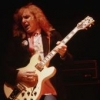

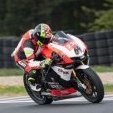

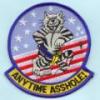
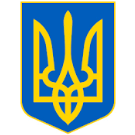


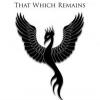
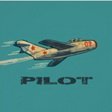
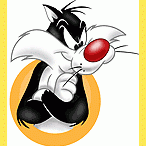
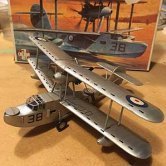

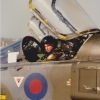

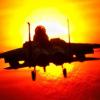
.thumb.jpg.d3635a7ef6507d35f372dd09671fe96f.jpg)

